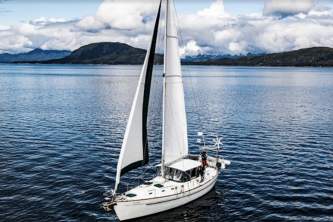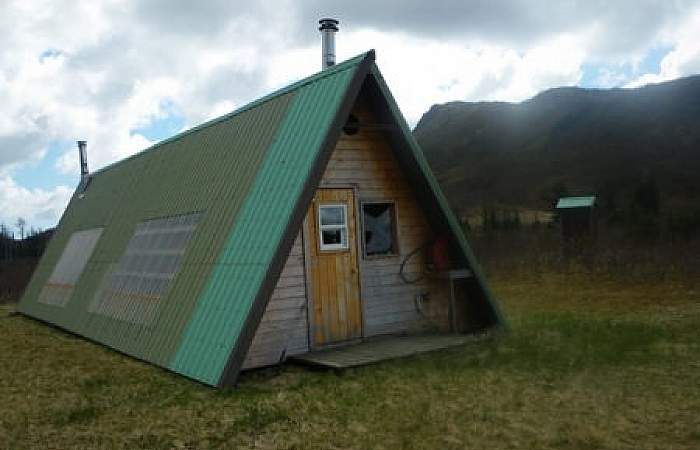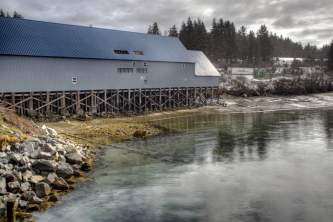Yakutat
Getting There
| Anchorage |
|
| Juneau |
|
How Long to Spend
Midway between the Inside Passage and Prince William Sound on the Gulf of Alaska coast, you’ll find some of Alaska’s most dramatic scenery: hundreds of miles of wild, uninhabited coast, glaciers larger than states, the biggest ice cap outside Antarctica, and the world’s highest coastal mountains (including North America’s second highest peak, Mt. Logan).In the middle of this spectacular nature show, over 100 miles from the nearest coastal town, lies the laid-back town of Yakutat. This tiny speck on the map has less than 1,000 residents—and locals typically don’t want large-scale tourism. Still, they welcome independent travelers—and you’ll feel the warmth when you visit.
Alaska's Unsung Peak
Friendly people are just the beginning. On a clear day, the views of Mt. Logan and the St. Elias Mountains across Yakutat Bay are just as thrilling as the views of Mt. McKinley from Talkeetna. (It’s no surprise: Just 2 football fields shy of Mt. McKinley’s peak, Mt. Logan was believed to be the continent’s highest peak when it was originally climbed in 1925.)
But dominating the region is Mt. Saint Elias, its perfect 17,800-foot pyramid looming just north of Yakutat and only a few miles from the Gulf of Alaska at Icy Bay.
Rich History
Yakutat also has a rich native culture that has formed over the last 12,000 years, but theirs isn’t the only history here, however. The Russian-American Company built a fort in Yakutat in the late 1790’s and for years exploited the local Tlingit Indians, plundering their salmon, restricting their travel, and even abducting their children. The Tlingit finally had enough and destroyed the fort and drove the Russians away in 1804.
But the world wouldn’t stay away, of course. In the late 1800s and throughout the 20th century, gold mining, commercial fishing, and timber harvesting came to the area.
World War II brought the biggest changes. When it was thought that Alaska would be a major theater of war, the U.S. military built a major airfield here, as well as other naval and army facilities. You can still see their remains, including a massive aircraft hangar at the airport, cannon that point out to sea from beachfront emplacements, and miles of winding, camouflaged roads that are wonderful for summer hikes and winter snowshoeing and skiing.
Favorite Attractions
- The St. Elias Dancers: Today, five clans of Tlingit Natives make up half the town’s population, and they show lots of pride in their native heritage. This is one of the best Native dance troupes in the state—they put a lot of care into their brilliant regalia, spirit into their traditional dance, and pride into their youth, who are taught to carry on Tlingit tradition and culture.
- An icefield and glaciers: A short flightseeing hop away is Hubbard, Alaska’s longest tidewater glacier, which is 75 miles long, with a six-mile-wide face. It’s so long, in fact, that it takes 400 years for the ice to reach the sea. Nearby, you can also see Alaska’s largest icefield, the Malaspina (which is bigger than Rhode Island
- Fishing: Anglers have long known about the treasure trove of fishing here, both in the rivers and the ocean: local guides and charter captains can take you out to catch all five species of salmon, along with halibut, lingcod, and world-famous springtime steelhead trout fishing. Not casting a line? Pick up fresh or frozen fish at the cannery and bring it home with you.
- Hiking: There are more than 100 miles of wide, black sandy beaches that were mined for gold in the 1880’s. A few miles from town you’ll find the carcass of an old barge, now half-buried. It’s been collecting sand for 30 years; the mayor believes it may hold millions of dollars of gold at today’s prices!
- Beachcombing with a side of history: You can look for Japanese fishing net glass balls still washing from beach sands after frequent North Pacific storms.
- Surfing: It has recently become an iconic local sport as well, and surfing “breaks” with secret names abound. But outsiders are quickly tuning in to the sound of surf at Yakutat.
- A historic (but closed) railroad: Built in 1903, the Yakutat and Southern was the only railroad in the U.S. built to carry raw fish, the only to run on a tide table, and the first to implement ticket-less travel: your fish was your ticket! Walk through the center of town and you can still see the old Lima Steam Engine and other train parts. It’s a true symbol of this authentic Alaskan town.
Getting Here
It's located along the Alaska Marine Highway, and has twice-daily flights service from Anchorage. Car rentals are available, but Yakutat will also welcome adventurers with a mountain bike, kayak, tent, and backpack. (Just remember the traveler’s “leave no trace” mantra.)



